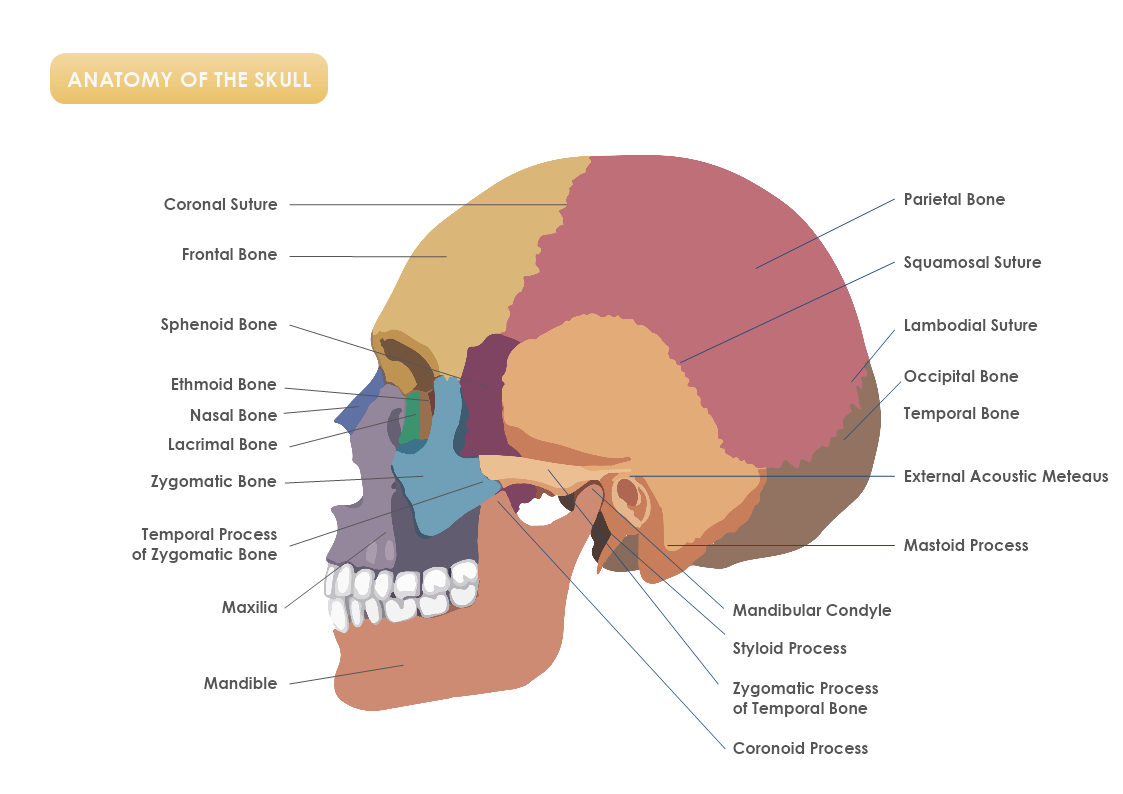This is an Anatomy of the Skull template with labels to help in the learning curve process of the human skull. The template is customizable with a few drags and drops in MyDraw.
Download Template:


Download Template:



What is the human skull?
The human skull is made of the bones and cartilage that surround the brain and form the upper part of the head. The anatomy of the human skull consists of several individual bones that fit together. The purpose of the skull is to protect the brain and to support and provide structures for the parts of the face. The skull is of great importance as the brain is so complex and fragile, thus needs extended measures of protection.
Tips on how to memorize the bones of the skull
Learn the main bones and their structure.
Divide the bones into groups.
Use your palm the visualize the top of your head.
Make associations with your favorite books, signers, places, etc.
Remember the number of the bones.
5 interesting facts about the human skull
- The teeth are not bone parts of the human skull.
- Foramina or also known as tiny holes are a main part of the skull.
- The skull cap and brain case are different parts.
- Gender and part of the world influence the shape of the human skull.
- The human skull has fractals.
How to create a shape of the human skull for an Anatomy diagram?
- You can create your shape in a vector program and import/ insert it as a vector or raster image. The other option is to use MyDraw’s Basic shapes and connectors and make your custom shape.
- Once you are happy with the custom shape you could include it in your Library.
- Click on the textbook icon on the left side of the bar and choose “New Library”. Name the library and drag and drop the shape in it.
- Then right-click with the mouse on the Library tab and choose “Save as”.
- Choose the folder location on your computer and save it as a .nlb file.
- For future use, you could always add the newly created library to other diagrams.
-
You can also use one of the shapes from Healthcare
- Once you have created your diagram/ template you can save the document in one of MyDraw’s native formats or export it in a preferred file format(PDF, SVG, EMF, VSDX, etc.).
- You can also export the document as a raster image.
